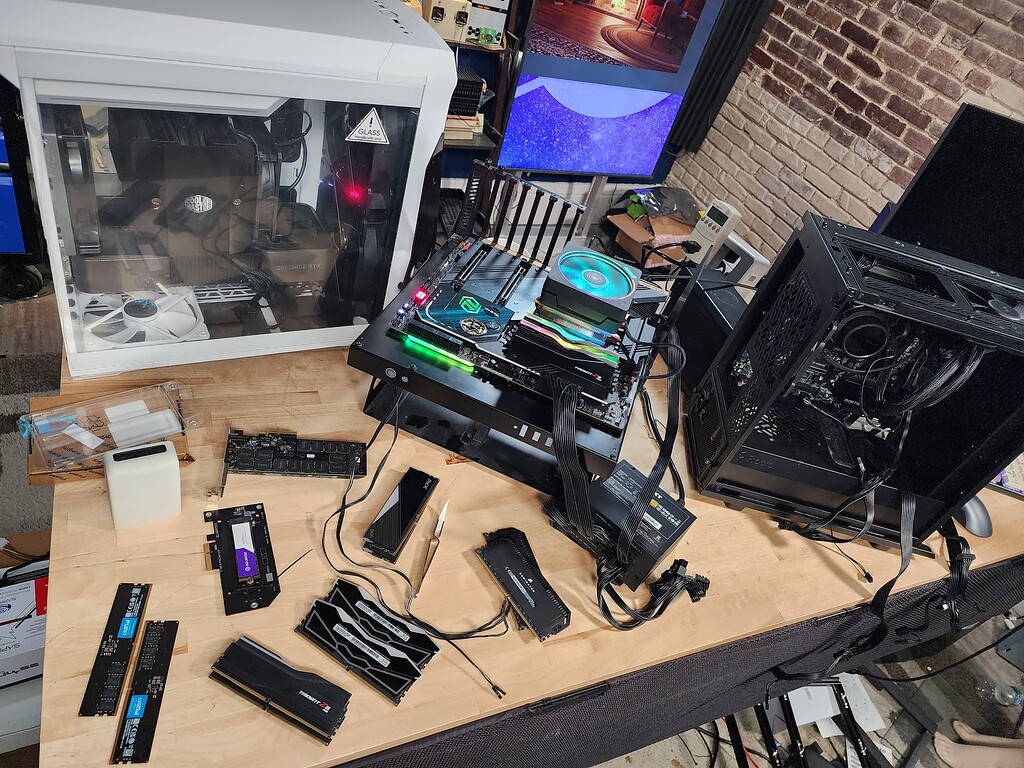I have read on the internet that many Ryzen Zen 5 x3D and non x3D V-Cache variants are dying out of the blue.
Especially on reddit what is kind of trash, but with some value sometimes.
The death occured mainly on ASrock boards, but some other board vendors with specific boards had the same problem.
OS of choice was of course Windows 11, but I hadn't heard anything regarding linux or *BSD PCs.
I wonder whether this is the usual user error, or manufacturer error, or both ?
Did someone on FreeBSD encountered that same problem ?
My non X3D Ryzen 9900X CPU partly died last week on my X670E Xtreme AORUS Gigabyte Mainboard.
What I mean with partly is, it started with 4 RAM sticks running at 5600MHz.
After a few months it couldn't boot anymore with these 4 RAM sticks running at that frequency so, I disabled XMP and they run at 3600MHz.
For around 5 months the CPU could not run at that frequency, too, instead it could not run with 4 RAM sticks anymore, but only booted fine with 2.
It seems to me that the RAM controller on the CPU is kind of dead.
I wonder whether this could have something to do with undervolting the CPU to much.
With my new board MSI MPG X870E Carbon Wifi, I am not trying to make the same mistakes with a AMD R9 9900X3D CPU.
The only problem reported with this board is that it doesn't boot right with Wifi enabled, but I didn't hear a CPU die on it.
The only other CPU of the R9 lineage which died recently is the R9 9950X3D...
Especially on reddit what is kind of trash, but with some value sometimes.
The death occured mainly on ASrock boards, but some other board vendors with specific boards had the same problem.
OS of choice was of course Windows 11, but I hadn't heard anything regarding linux or *BSD PCs.
I wonder whether this is the usual user error, or manufacturer error, or both ?
Did someone on FreeBSD encountered that same problem ?
My non X3D Ryzen 9900X CPU partly died last week on my X670E Xtreme AORUS Gigabyte Mainboard.
What I mean with partly is, it started with 4 RAM sticks running at 5600MHz.
After a few months it couldn't boot anymore with these 4 RAM sticks running at that frequency so, I disabled XMP and they run at 3600MHz.
For around 5 months the CPU could not run at that frequency, too, instead it could not run with 4 RAM sticks anymore, but only booted fine with 2.
It seems to me that the RAM controller on the CPU is kind of dead.
I wonder whether this could have something to do with undervolting the CPU to much.
With my new board MSI MPG X870E Carbon Wifi, I am not trying to make the same mistakes with a AMD R9 9900X3D CPU.
The only problem reported with this board is that it doesn't boot right with Wifi enabled, but I didn't hear a CPU die on it.
The only other CPU of the R9 lineage which died recently is the R9 9950X3D...


